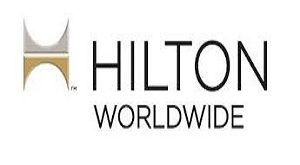To secure radioactive materials for a new drug, pharmaceutical companies are moving up the supply chain. Please use the sharing tools found at the top or side of articles. Duplicating articles to impart to others is a break of FT.com T&Cs and Copyright Strategy. To acquire additional rights, send an email to
[email protected]. Endorsers might share up to 10 or 20 articles each month utilizing the gift article administration. You can learn more about the tour at
Eli Lilly, the world’s greatest drug bunch by market esteem, is entering the matter of atomic isotope creation, as malignant growth drugmakers look to get supply of radioactive materials urgent to the arising field of radiopharmaceutical oncology drugs.
Ionetix, a supplier of isotopes, has received $10 million from the drugmaker based in Indianapolis through a convertible loan. Ionetix owns a manufacturing facility that can produce actinium-225, a very scarce isotope that is essential to many radiopharmaceuticals. The company has received $10 million in funding from additional existing investors.
Radiopharmaceuticals, also called radioligands, are one of the most encouraging new areas of disease therapies, where through joining a radioactive isotope with an immunizer mixed drink, drug designers can convey a more harmful portion direct to malignant growth cells, contracting cancers all the more proficiently.
One of a series of acquisitions in which a major pharmaceutical group bought an early-stage drugmaker utilizing actinium-225 to attack cancer cells, Eli Lilly purchased Point Biopharma, a biotech that specializes in radiopharma drugs to treat prostate cancer, for $1.4 billion last year.
Eli Lilly, Bristol Myers Squibb, and AstraZeneca spent $8 billion on biotechs, with actinium-225 being used in clinical trials for the lead drugs. Radiopharma products made with different isotopes have already been approved by Bayer and Novartis.
However, a lack of isotope supply has hampered growth in the radiopharmaceuticals industry, which Morgan Stanley analysts anticipate will generate sales of up to $39 billion by 2032. RayzeBio, which was purchased by Bristol Myers for $4.1bn, had to stop enrollment for the worldwide arm of one of its radiopharma drugs for a while this year due to an absence of actinium-225.
If it’s not too much trouble, utilize the sharing instruments found through the offer button at the top or side of articles. Duplicating articles to impart to others is a break of FT.com T&Cs and Copyright Strategy. Email
[email protected] to purchase extra privileges. Using the gift article service, subscribers can share up to ten or twenty articles per month. More data can be found at https://www.ft.com/visit.
According to industry estimates that were viewed by the Financial Times, since actinium-225 does not occur naturally, there are only two curies — a measurement of nuclear energy — of the isotope produced annually, sufficient to treat approximately 2,000 patients at most.
A rare instance of Big Pharma investing further up the supply chain to ensure actinium supply is Eli Lilly’s modest bet on Ionetix. A machine known as a cyclotron is used at Ionetix’s manufacturing facility in Lansing, Michigan, to blast radium-226 with a proton beam to create actinium-225.
By the end of next year, Ionetix, which is installing a new cyclotron on the site, anticipates that it will be able to produce approximately one curie of actinium per week, providing approximately 26,000 patient doses annually. Other suppliers of medical isotopes, such as TerraPower, which is backed by Bill Gates, and NorthStar, which is backed by the US government, are also expanding supply.
“We see value in supporting companies such as Ionetix, which are important to Lilly from a strategic perspective in terms of being part of the actinium supply chain,” Eli Lilly told the Financial Times when it was developing radiopharmaceuticals.
In tests earlier this year, Ionetix demonstrated that it could produce actinium-225 of a sufficient quality and completely recycle the radium-226 precursor obtained from a US government stockpile. Ionetix likewise has an indicative imaging business.
Point Biopharma, which was gained by Eli Lilly, had proactively given a $10mn convertible credit to Ionetix, so altogether Eli Lilly will have a $20mn obligation office with the organization that it can change over into value.
Eli Lilly is anticipated to convert its loan to equity at the time of the Ionetix funding round, which will value the company at more than $300 million.
For the second quarter, Novo’s net sales reached $9.95 billion, making it one of the pioneers in the multibillion-dollar metabolic disease market. Operating profit increased by 18% in local currency, despite the impact of an $833 million impairment caused by the Phase III failure of ocedurenone, a candidate for treating hypertension caused by chronic kidney disease.
Refering to supply requirements, the organization cut its working benefit development gauge this year to somewhere in the range of 20% and 28%, down from 22% to 30% as recently expressed.
According to the Q2 earnings report, Novo stated that it had “capacity limitations at some manufacturing sites” and that the outlook reflected “periodic supply constraints and related drug shortage notifications” across a variety of products.
At constant exchange rates (CER), sales are anticipated to rise from the initial guidance of 19%–27% to 22%–28%. The organization said it is putting forth attempts to increment supply, remembering ventures for inner and outside limit.
Reci said, ” Novo is positive about its capacity to address [supply issues] and increment Wegovy creation, expecting more grounded development in the last part of 2024.”
Novo’s lower sales are the result of its flagship cardiometabolic product no longer having a market monopoly, along with supply bottlenecks.
Reci stated, ” The send off of Zepbound in the US market in December 2023 has presented huge contest for Wegovy. Patients on Zepbound saw a 21 percent weight loss over the course of 72 weeks, while those on Wegovy saw a 15 percent weight loss over the course of 68 weeks, according to clinical trials. These discoveries make Zepbound a more alluring choice for medical services suppliers and patients looking for successful weight reduction arrangements.”
The US pharmaceutical company’s Zepbound (tirzepatide) sales in the first quarter of this year, which totaled $517 million, were higher than anticipated. GlobalData’s Pharma Intelligence Centre predicts that by 2030, sales of the drug will total $27.2 billion. Wegovy, on the other hand, may not reach the same heights; sales are expected to reach $18.7 billion that same year.








